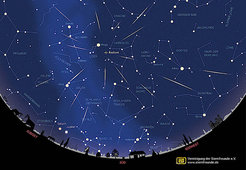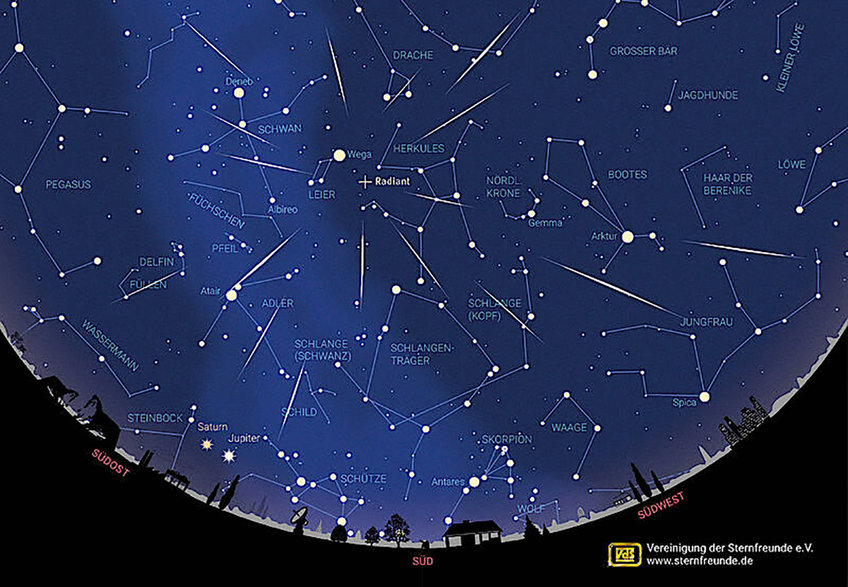Spring meteors during dark nights
When the Lyrid meteors appear during the night of 21/22 April, amateur astronomers can profit from a dark sky this year. Only two days later we have new Moon, so the Moon will not light up the night sky and even fainter shooting stars will be visible.
The Lyrids were named after the constellation Lyra, from which they seem to come. However, this is only an effect of perspective, similar to driving through snow flakes. On its journey around the Sun, Earth crosses the remnants of the comet Thatcher, discovered in 1861 at this time. The small particles following the comet's orbit collide with Earth's atmosphere with approximately 50 kilometres per second (180,000 km/h), become extremely hot and cause the air surrounding them to glow - we see a shooting star flashing across the sky.

Lyra is a small constellation, but its main star Vega is the brightest star in the northern sky. Four fainter stars form a parallelogram, and in addition there is shiny Vega right on top. Lyra is considered a summer constellation, so in April you can only see it very late in the evening and until the morning. The constellation rises in the northeast and stands high above the southeast horizon at dawn. The Lyrid meteors thus appear late in the evening or after midnight - and it is advisable to look to the east.
Typically about 20 shooting stars can be seen per hour, that is one every three minutes. According to the forecasts of meteor experts, unusually high numbers are not expected this year, but the moonless night makes it easier for night owls to look out for Lyrids. To see as many shooting stars as possible, we recommend go to a dark observing site, otherwise the omnipresent light pollution near larger settlements will brighten the sky too much.
If you stay awake for a long time or get up early, you can also see the planets Jupiter and Saturn just above the southeastern horizon at this time.
